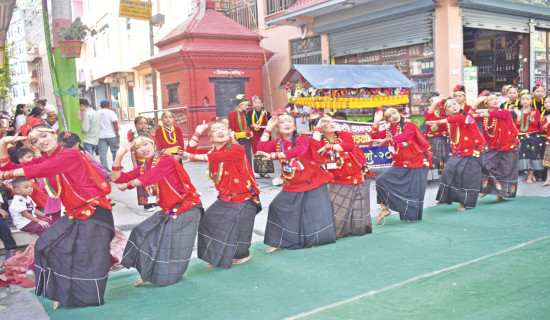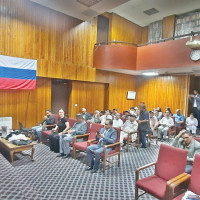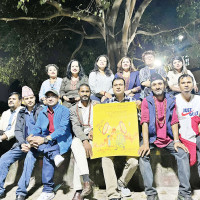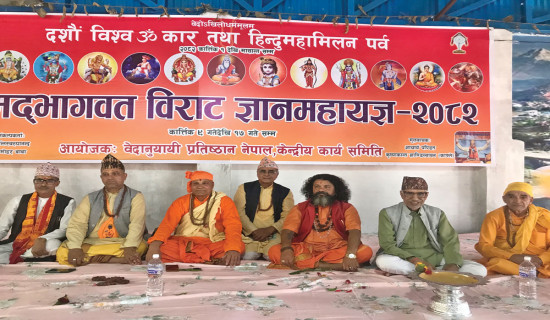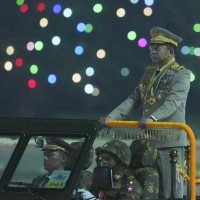- Wednesday, 22 October 2025
Ancientry Verses Modernity
Countries, civilisations, societies, and even individuals at times get tested over the issue of preserving the roots versus going global. The European Renaissance of the 14th to 17th centuries is an example. As Europe encountered the classical knowledge of Ancient Greece and Rome through the Arab world, there was a push to revive this ancient wisdom while integrating it with contemporary Christian values and European identities. The Renaissance led to a flourishing of art, science, and philosophy, combining classical ideas with new innovations, though it also created tension between tradition and progress.
During the Meiji Restoration (1868–1902), Japan faced the pressure to modernise and compete with Western powers while maintaining its unique cultural identity. Ultimately, the government adopted Western technologies, education, and military practices but preserved traditional customs like the emperor system and Shinto religion. In the Tanzimat Reforms (1839-1876), the Ottoman Empire sought to modernise its institutions and integrate more with European powers while retaining Islamic and Ottoman traditions. The reforms led to a modernisation of the military, legal, and educational systems but also triggered internal conflicts about the erosion of Islamic law and traditional governance.
In the nineteenth century, faced with western imperialism, China struggled between adopting western technologies and ideas while preserving Confucian values and traditional Chinese culture. Efforts to modernise, such as the Self-Strengthening Movement, met with limited success as the country remained divided between reformists and conservatives, eventually leading to the collapse of the Qing Dynasty. After the communist revolution of 1949. China has embraced modernisation, distancing itself from religious practices, but it also has tried to identify with ancient cultures.
In the nineteenth and twentieth centuries, India was influenced by British colonial rule, which introduced western education, legal systems, and economic structures. At the same time, there was a strong movement to preserve and revive Indian traditions and culture. The Indian independence movement, led by figures like Mahatma Gandhi, emphasised a return to indigenous practices while negotiating the complexities of modern nationhood and globalisation.
Nepal is a melting pot of Hinduism and Buddhism, with centuries-old temples, rituals, and festivals that are deeply embedded in daily life. Preserving these traditions is central to Nepali identity. Many citizens and institutions are actively working to maintain cultural practices, language, and religious customs.

Until 2008, the monarchy and Hinduism were symbols of national unity and continuity of traditional values. New symbols of unity are yet to consolidate.
Nepal’s unique cultural and natural heritage, including the holy shrine Pashupatinath, the highest mountain Sagarmatha (Mt. Everest), and Buddha’s birthplace Lumbini, has made tourism a significant part of its economy. This diligence brings in global influences and necessitates a degree of adaptation to international standards and expectations, while also providing a platform to showcase Nepali culture to the world.
The Nepali diaspora plays a crucial role in the country's economy through remittances. This global network also introduces new ideas, lifestyles, and cultural influences into Nepal, creating a dynamic exchange between traditional practices and modern global trends.
Nepal is increasingly integrating into the global economy through initiatives in infrastructure, education, and technology. Here we also need to ensure that modernisation does not erode the social and cultural fabric.
There is an ongoing debate about the impact of globalisation on Nepal's cultural identity. While modernisation offers economic opportunities and social progress, it also raises concerns about the loss of traditional values, languages, and ways of life.
Nepal's challenge is to find a balance between maintaining its rich cultural heritage and embracing the benefits of globalisation, such as improved living standards, access to global markets, and modern infrastructure. Nepal’s journey is a continuous negotiation between honouring its deep-rooted cultural heritage and adapting to the demands and opportunities of an increasingly interconnected world.
Reform attempts
Sanatani roots in Nepal trace back to around 1500 BCE as an Aryan Vedic contribution that slowly blended with indigenous mountainous civilisation represented by Mahadeva. The Lichchhavi dynasty (400–750 CE) solidified Hinduism’s dominance with the worship of gods like Vishnu and Shiva. Buddhism evolved around Lumbini in the 6th century BCE. It gained more influence during Emperor Ashoka’s reign (3rd century BCE), spreading widely. For centuries, Hinduism and Buddhism coexisted, especially in the Kathmandu Valley, leading to a unique blend of religious practices. Festivals, rituals, and shared worship of deities like Avalokiteshvara (Bodhisattva) and Vishnu reflect this syncretism, which continues to shape Nepal’s religious and cultural identity today.
In course of time, parts of Nepali society were characterised with a rigid social hierarchy where Dalits and some other communities faced social discrimination. There also existed sporadic Sati systems, child marriage, gender discrimination, dowry systems, and Deuki practices.
Significant efforts have been made to reform deep-rooted social malpractices. In 1920, Prime Minister Chandra Shumsher Rana abolished the Sati system, which forced widows to be burned on their husbands’ funeral pyres. He also ended slavery in 1925, freeing thousands of the enslaved. The introduction of the new Muluki Ain in 1963 by King Mahendra marked a turning point, addressing caste discrimination, untouchability, the dowry system, and gender inequality. Untouchability was declared a crime.
The 1990 Constitution outlawed deuki practice, where young girls were offered to temples as religious offerings. In 2000, the kamaiya system of bonded labour was abolished, freeing thousands of workers in western Nepal. Legal reforms targeting child marriage and the dowry system were introduced in the late 20th century, reflecting continued efforts to modernise and uplift society.
All of these reforms were organic and crafted by us, the Nepali people. We are open-minded, embracing modernisation while accepting diversity. We reflect, dream, and judge for ourselves. We choose to accept or reject, take steps forward, and modernise while preserving our roots.
(Regmi is a professor at Tribhuvan University and a researcher at Charhar Institute, China.)



